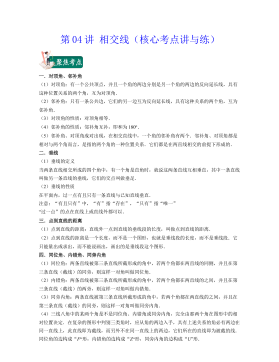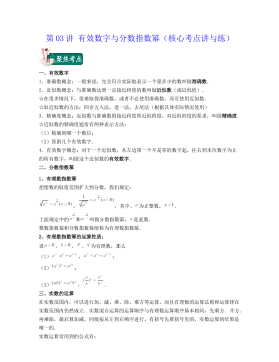我国流动儿童义务教育问题研究—基于财政学视角
VIP免费
浙江财经学院硕士学位论文
I
摘 要
随着城市化与工业化的加速,越来越多的农民工涌入城市。2003 年流动人口
达到 1.4 亿,去年的数据是 2.11 亿,到 2050 年,流动人口的规模将达到 3.5 亿
左右。且从上世纪九十年代以来,农民工流动由“单个人”流动转向“举家迁徙”,
于是大量流动儿童随父母来到城市。
流动儿童正处于义务教育阶段,接受教育需要经费的投入,但是以“户籍”
为依据的教育经费拨款制度使得各级政府之间相互推脱责任,流出地的经费流不
过来,流入地又没有动力出这部分经费,同时中央本级政府也不作出相应资金安
排,这样导致流动儿童的上学经费得不到有效保障。从而形成流动儿童义务教育
问题。且问题已经随着流动儿童数量的增多不断地加大,也引起了越来越多的关
注,解决此问题已经迫在眉睫。
本文认为解决问题的关键在于重新界定包括流动儿童义务教育在内的义务教
育的性质,同时明晰在流动儿童义务教育问题上,各层级政府应该承担的责任,
在此基础上,再作出相应的经费支出安排。
流动儿童所面临的最直接的问题是经费的问题,一方面是因为由县级地方政
府承担主要的经费超出了其财政的承受能力;但是另一方面也不可否认我国目前
的财政体制尤其是义务教育拨款体制所存在的弊端。现实中,也存在某些地方政
府有足够的财力,但是却没有动力来解决经费问题的情况。
为了切实解决这一问题,本文对问题的实质和产生的根源作了系统的分析并
提出相应对策。总的来说,解决的方针可以概括为“分步走战略”,即分为短期措
施和中长期战略。
从短期来看,针对第一方面的问题,本文通过重新定义义务教育,指出包括
流动儿童义务教育在内的义务教育是全国性的公共品,所以其投资主体应该上移
至中央政府,在短期内由中央来承担义务教育的大部分责任和经费拨款;财政体
制的缺陷主要体现在由目前的义务教育拨款体制所导致的义务教育适龄儿童流动
时所产生的“经费真空”。仅管国家三令五申,通过颁布相关政策,比如“两为主”
政策来试图为问题的解决寻找突破口,但是中央只是出了政策以力图对下级财政
进行支配,自己却不做出足够且稳定的资金安排。地方政府也只是一直打擦边球,
与中央政府进行消极对抗,于是由义务教育法所规定的“对义务教育经费实行保
障”在解决这一问题上没有得到很好的落实。
本文为解决这一问题作了积极的探索,指出应该通过教育券制度和完善转移
支付制度来破解流动儿童义务教育所面临的“经费受户口限制不能流动”的问题,
同时通过由中央本级财政设立流动儿童义务教育专项基金和明确各政府层级的责
浙江财经学院硕士学位论文
II
任,来保证流动儿童义务教育经费得到保障。
本文也试图在较长的时间跨度对问题的解决进行展望与尝试。文章第四部分
首先对当前的义务教育入学政策进行质疑,指出在中长期尝试改革基于户籍制度
的义务教育入学政策,实现义务教育适龄儿童“依居住地就近入学”,在这种制度
下流动儿童义务教育问题将得到缓解;此外可以通过改良对官员的考核体系来提
高地方政府解决流动儿童义务教育问题的积极性;同时通过改变地方的财政体制,
增加劳动力要素贡献,在地方政府之间形成争夺“劳动力”的竞争,使各地方政
府有内在的动力为争取更多的劳动力流入自觉地改良包括流动儿童义务教育在内
的公共品质量;最后,文章提出由中央政府对义务教育实行全包的思想理念,并
从理论和具体操作两个层面来试图论证其合理性,并指出这是实现教育公平、实
现义务教育全国公共品属性的必由之路。
关键词:城市化;流动儿童;义务教育;教育券;蒂布特模型
浙江财经学院硕士学位论文
III
ABSTRACT
With the acceleration of urbanization and industrialization, more and more
migrant workers flow into cities. In 2003, Floating population is up to 140 million, 211
million last year and will reach around 350 million in 2050.With the transition of
flowing tendency of migrant workers from the “individual flow” to “whole family flow”,
a large number of migrant children move to the cities with their parents.
Migrant children are in need of compulsory education and education requires funds
input. To migrant children, it is a very tough problem when it comes to getting the funds
for free, because the appropriation is based on the “hukou” which is used to prove
somebody to be a permanent resident somewhere. That is to say, if they don't have the
local “hukou” where they flow into, they are very difficult to get free compulsory
education mostly provided by local government. What's worse, the problem has
continued to deteriorate with the increase of migrant children, and it has attracted more
and more attention from the media and the public. Undoubtedly, it is very urgent to
solve this issue without delay.
This paper argues that the key to this problem is to redefine the nature of
compulsory education, including migrant children's compulsory education, and clarify
the responsibility taken by all levels of governments, then rearrange funds appropriation
accordingly.
The most urgent problem that migrant children are facing now is how to get the
money to support their compulsory education. The reason to say so is partly because
local governments bear the main part of funding responsibility beyond its financial
capacity; On the other hand, it is obvious that there exist deficiencies in our current
appropriation system particularly compulsory education funding system. In reality, there
are indeed some local governments who have solid financial capability, but the point is,
they don't have equally enough incentives to solve the funding problem. So in order to
effectively solve this problem, this paper focus the energy on exploring the essence of
the problem and carrying out a systematic analysis of the root causes and then lay out
some countermeasures accordingly. In general, the approach can be summarized as
“sub-step strategy”, which is divided into short-term measures and long-term strategy.
In the short term, for the first problem, this paper re-defines the nature of
compulsory education that includes migrant children's compulsory education, and points
out that it is a national public goods, so the main investment burden should be shifted to
浙江财经学院硕士学位论文
IV
the central government; Appropriation system deficiencies mainly lie in the fact that the
money originally belonging to the migrant children can't transfer into the place where
the flow into, causing the phenomenon called “financial vacuum”. Though in recent
years, the central government has enacted many laws and regulations to solve the
problem, such as the “two-first” policy to try to find a breakthrough to the problem, the
result is not very optimistic, since the central government has no stable and enough
funds input, only has attempted to order the local government to arrange funds
themselves, leaving the problem unsolved.
This paper has made active exploration to solve this problem, pointing out that the
bottleneck to this problem can be overcome through education vouchers system and
improvement in transfer payment system. It states that the central government may try
to set up a special fund for migrant children and calls for the clarification of
responsibility taken by all levels of government, in order to guarantee the fund
resources used to invest migrant children's compulsory education.
This paper also attempts to solve the problem in a longer time span and try to
outlook.
Key Words: Urbanization; Migrant Children; Compulsory Children; School Vouchers;
Tiebout Model
摘要:
展开>>
收起<<
浙江财经学院硕士学位论文I摘要随着城市化与工业化的加速,越来越多的农民工涌入城市。2003年流动人口达到1.4亿,去年的数据是2.11亿,到2050年,流动人口的规模将达到3.5亿左右。且从上世纪九十年代以来,农民工流动由“单个人”流动转向“举家迁徙”,于是大量流动儿童随父母来到城市。流动儿童正处于义务教育阶段,接受教育需要经费的投入,但是以“户籍”为依据的教育经费拨款制度使得各级政府之间相互推脱责任,流出地的经费流不过来,流入地又没有动力出这部分经费,同时中央本级政府也不作出相应资金安排,这样导致流动儿童的上学经费得不到有效保障。从而形成流动儿童义务教育问题。且问题已经随着流动儿童数量的增多...
相关推荐
-
跨境电商商业计划书模版VIP免费
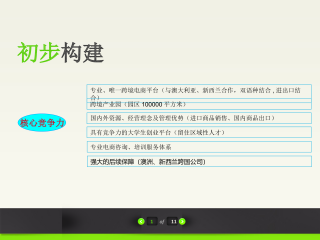
 2025-01-09 27
2025-01-09 27 -
跨境电商方案范文VIP免费
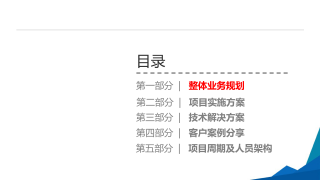
 2025-01-09 14
2025-01-09 14 -
创业计划书VIP免费
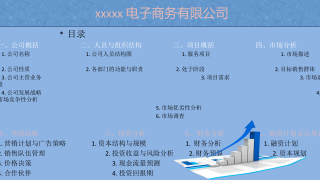
 2025-01-09 18
2025-01-09 18 -
xx生鲜APP计划书VIP免费

 2025-01-09 12
2025-01-09 12 -
跨境电商创业园商业计划书(盈利模式)VIP免费
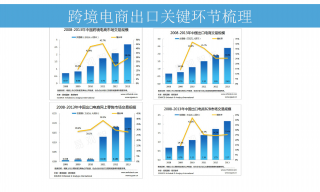
 2025-01-09 8
2025-01-09 8 -
跨境电商计划书VIP免费

 2025-01-09 13
2025-01-09 13 -
绿色食品电商平台项目计划书VIP免费

 2025-01-09 22
2025-01-09 22 -
农产品电子商务商业计划书VIP免费

 2025-01-09 9
2025-01-09 9 -
农村电商平台商业计划书VIP免费
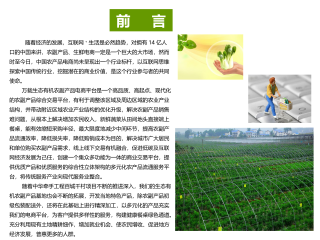
 2025-01-09 13
2025-01-09 13 -
生鲜商城平台商业计划书VIP免费

 2025-01-09 21
2025-01-09 21
作者:李佳
分类:高等教育资料
价格:150积分
属性:51 页
大小:737.74KB
格式:PDF
时间:2024-09-20


